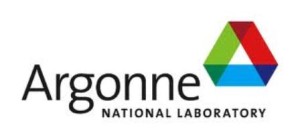Shuye Ping Ong
MIT
The lithium-air battery is a promising alternative to existing rechargeable batteries. However, there are substantial challenges, such as poor reversibility, cyclability, rate capability, and energy efficiency, which limit commercialization. Currently, the charge and discharge mechanisms and their relationship to the battery parameters are not clearly understood.
In this talk, we present our study of the mechanisms of the oxygen evolution reaction (OER) and electronic conduction in lithium peroxide (Li2O2) using first-principles calculations. Li2O2, the primary product during discharging, is an insulator and is suspected to increase the charging overpotential, thereby deteriorating the Li-air battery performance. We show that i) the OER process on low-index surfaces of Li2O2 is kinetically limited by the oxygen evolution, not by the extraction of Li+ ions and/or electrons, and that ii) the formation and migration of hole polaron VLi+ pairs is a possible electronic conduction mechanism in Li2O2.









